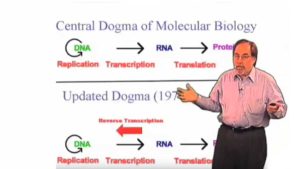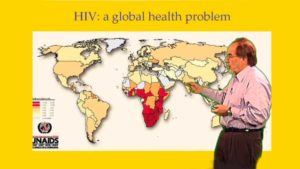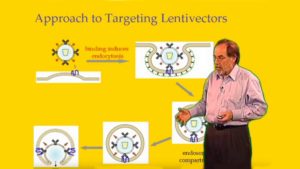Talk Overview
In this set of lectures, I describe the threat facing the world from the human immunodeficiency virus (HIV) and a bold proposal on how we might meet the challenge of eliminating this disease by engineering the immune system.
In part 1, I provide a broad introduction to viruses, describing their basic properties and my own history of studying the replication of RNA viruses which led to the discovery of reverse transcriptase. I also illustrate the distinguishing features of equilibrium viruses (e.g. the common cold) that have adapted to co-exist with their host and non-equilibrium viruses (e.g. HIV) that have recently jumped from another species, are not adapted to the new host, and which can lead to disastrous outcomes (e.g. loss of immune function with potential lethality in the case of HIV).
In part 2, I describe the growing health problem that is facing the world with the spread of HIV and the limitations of current drug therapies and vaccine strategies. We need new ideas for tackling this problem. Here and in the next segment, I describe bold strategies of using gene therapy to conquer HIV, The approach that I describe in this segment involves gene therapy to produce short hairpin RNAs (siRNA) that target the destruction of a critical co-receptor of HIV, which the viruses that needs to infect cells. I discuss initial proof-of-principle experiments that suggest this approach might be feasible and the next steps needed to develop this idea into a real therapy.
In this last segment, I describe another gene therapy strategy for HIV in which we propose to develop antibody-like proteins that can be expressed by a patient’s B cells and will target the HIV virus for destruction. To achieve this objective, hematopoietic (blood) stem cells must to be targeted with the gene, which will ultimately develop into B cells that express the therapeutic molecule. The ultimate goal is to produce a life-long supply of anti-HIV neutralizing antibodies. In this lecture, I describe the molecular methods underlying this strategy and a development path from proof-of-principle studies in mouse to safe trials in humans. This project receives funding from the Bill and Melinda Gates Foundation.








Leave a Reply